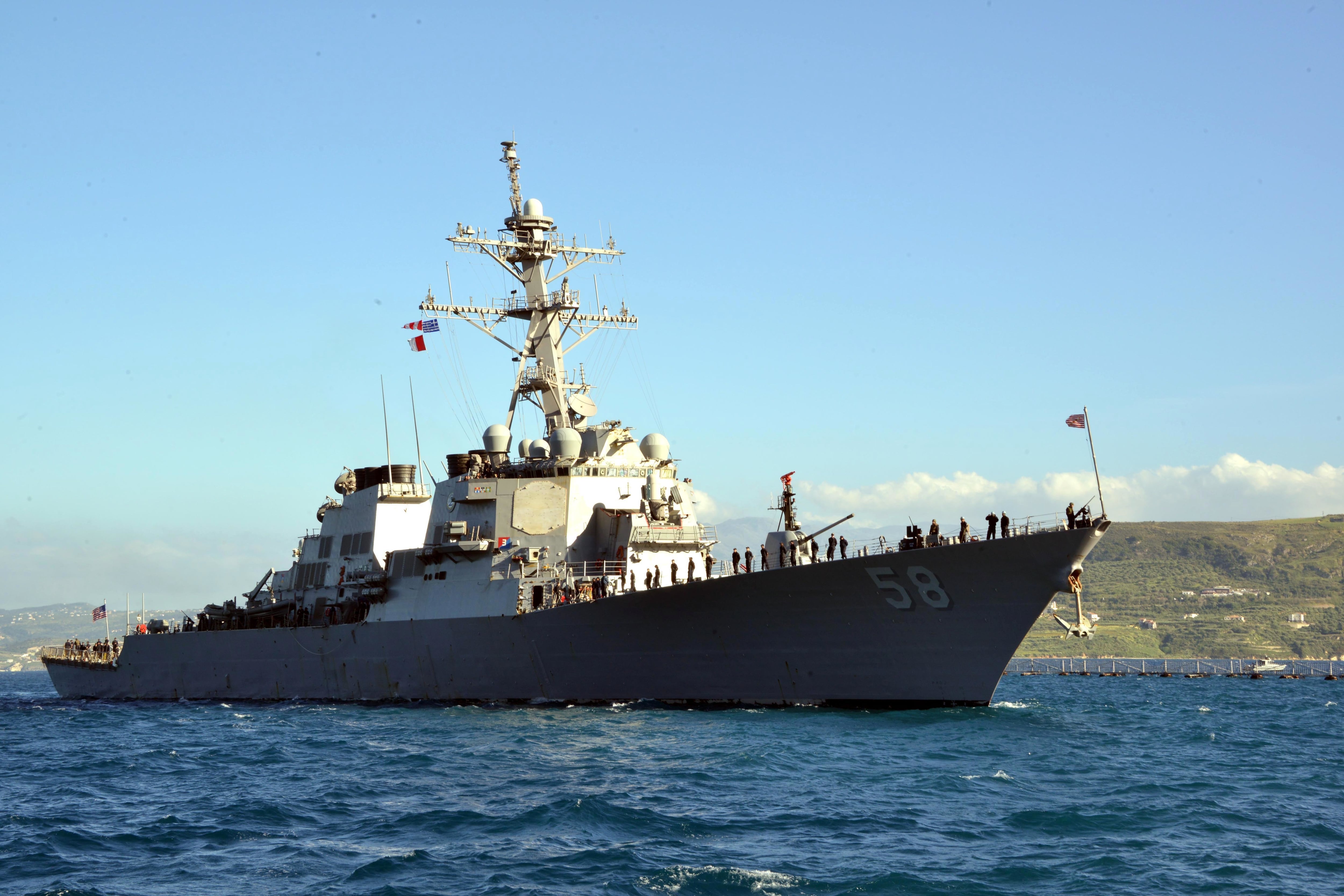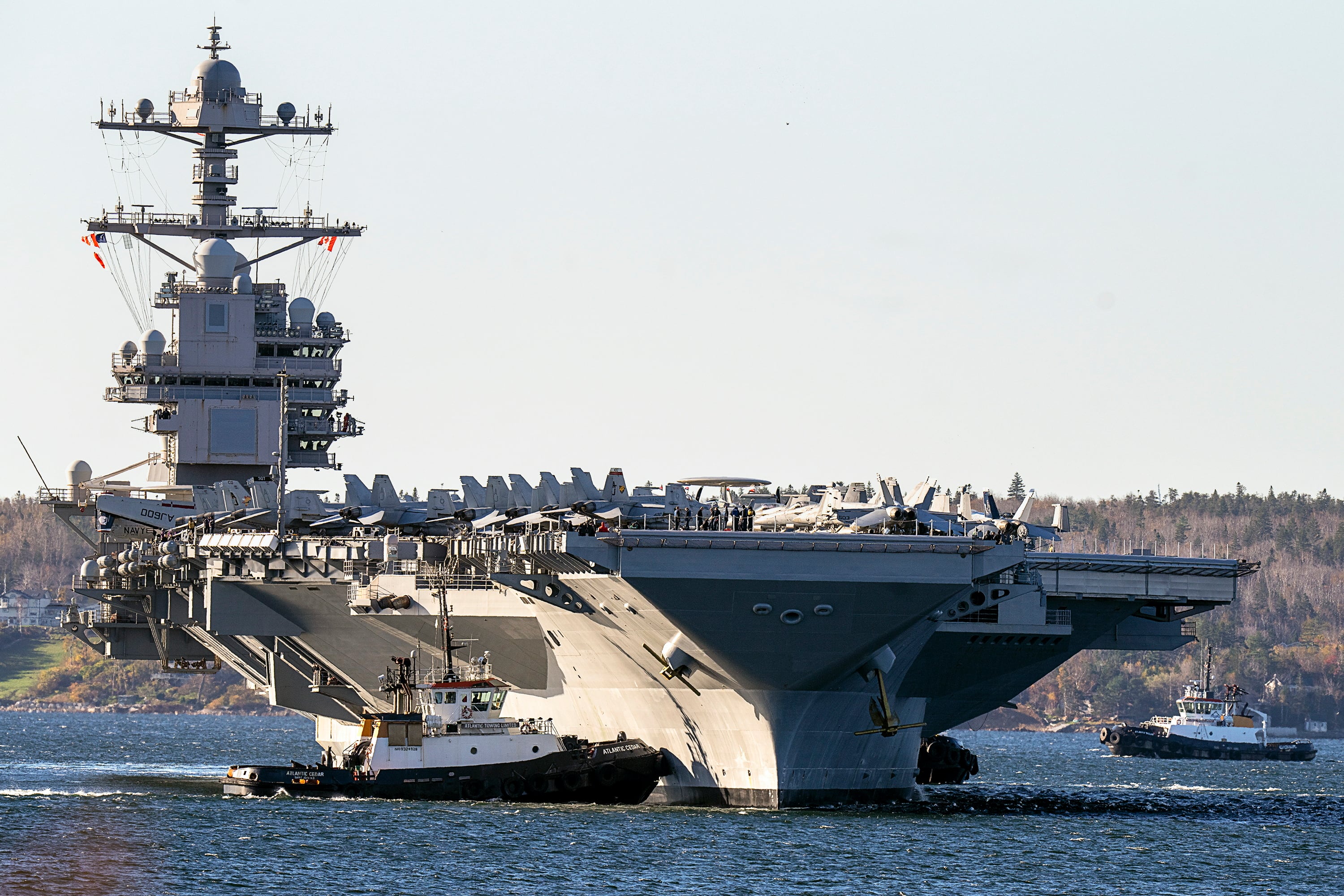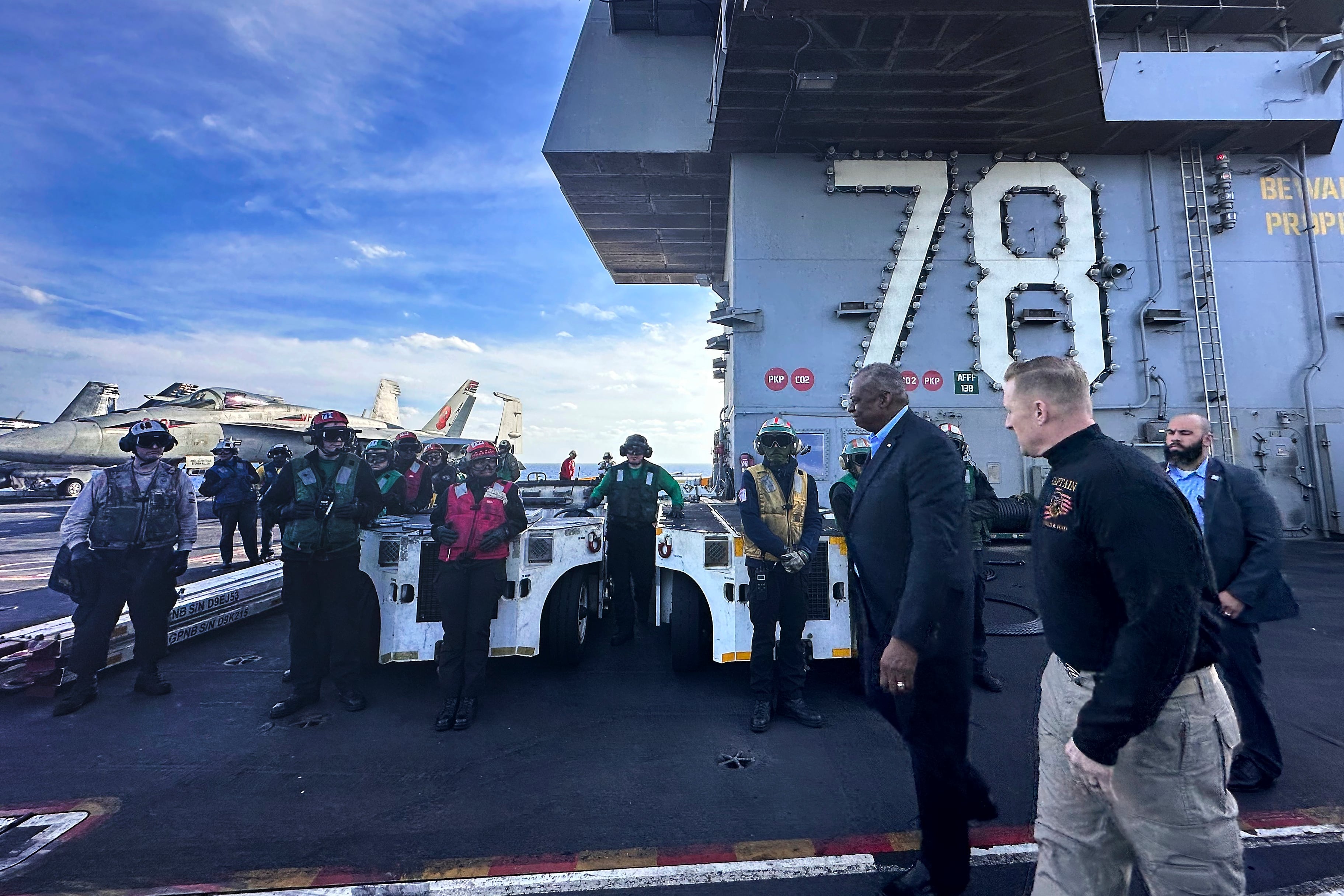After eight months of deployment, the aircraft carrier Gerald R. Ford is wrapping up operations and heading home from the Eastern Mediterranean Sea, where it has steamed since October following increased tensions in the region amid the Israel-Hamas war.
In a statement Monday, the Italy-based U.S. 6th Fleet said the flattop and its strike group will return to Norfolk, Virginia, in the “coming days.”
The amphibious assault ship Bataan, amphibious transport ship Mesa Verde and dock landing ship Carter Hall are slated to fill in for the carrier’s presence in the region, according to 6th Fleet.
Fellow Norfolk-based carrier Dwight D. Eisenhower was slated to replace Ford in the Mediterranean, but the Israel-Hamas war and regional instability prompted the Pentagon to dispatch the Ike carrier strike group to the Middle Eastern waters of U.S. Central Command last fall.
The Mesa Verde is carrying approximately 2,000 Marines from the 26th Marine Expeditionary Unit. Those Marines provide “forces capable of supporting a wide range of missions,” 6th Fleet said.
RELATED

The Carter Hall is a dock landing ship, which carries amphibious landing craft and their crews. Both vessels and the Bataan can support rotary aircraft; the Bataan can also carry and support Marine Corps’ F-35B vertical takeoff fighter aircraft.
“DoD will continue to leverage its collective force posture in the region to deter any state or non-state actor from escalating this crisis beyond Gaza,” 6th Fleet said.
The Ford got underway for its first full-length deployment in May, along with its strike group that includes the destroyers Ramage, McFaul and Thomas Hudner.
Ramage already returned to the states for a scheduled maintenance availability.
The Ford headed to the Eastern Mediterranean to be within striking distance of Israel since the day after Hamas’ Oct. 7 attacks. The carrier stayed in the Eastern Mediterranean while its accompanying warships had sailed into the Red Sea, where they repeatedly intercepted incoming ballistic missiles and attack drones fired from Yemen that were fired by Iran-backed Houthi rebels.
The Pentagon has in recent months extended Ford’s deployment three times in the Eastern Mediterranean, and the Ford and Ike have been part of a two-carrier presence bracketing the Israel-Hamas war, underscoring U.S. concerns that the conflict will widen.
RELATED

Destroyers Gravely, Laboon and Mason from the Eisenhower carrier strike group have all taken down drones and missiles in recent weeks and provided help to commercial vessels in the region who’ve come under attack from Houthis.
In one instance, the Laboon shot down 12 one-way attack drones, three anti-ship ballistic missiles, and two land attack cruise missiles in the Red Sea on Dec. 26, and the Carney took down 14 attack drones in the Red Sea on Dec. 16.
On Sunday, Navy helicopters from the Eisenhower and destroyer Gravely shot down three Iranian-backed Houthi small boats, after the small boats attacked the helicopters and another merchant vessel in the Red Sea.
U.S. Central Command said in a statement in December that the U.S. has “every reason to believe that these attacks, while launched by the Houthis in Yemen, are fully enabled by Iran.” As a result, U.S. Defense Secretary Lloyd Austin announced on Dec. 18 the creation of a multinational task force to help protect civilian ships transiting the economically vital Red Sea.
The Associated Press contributed to this report.
Correction: An earlier version of this report misstated the carrier strike group to which the Carney is assigned. Carney is assigned to the Dwight D. Eisenhower carrier strike group.




